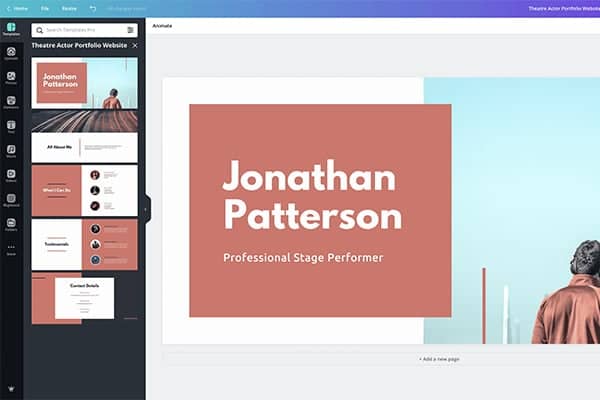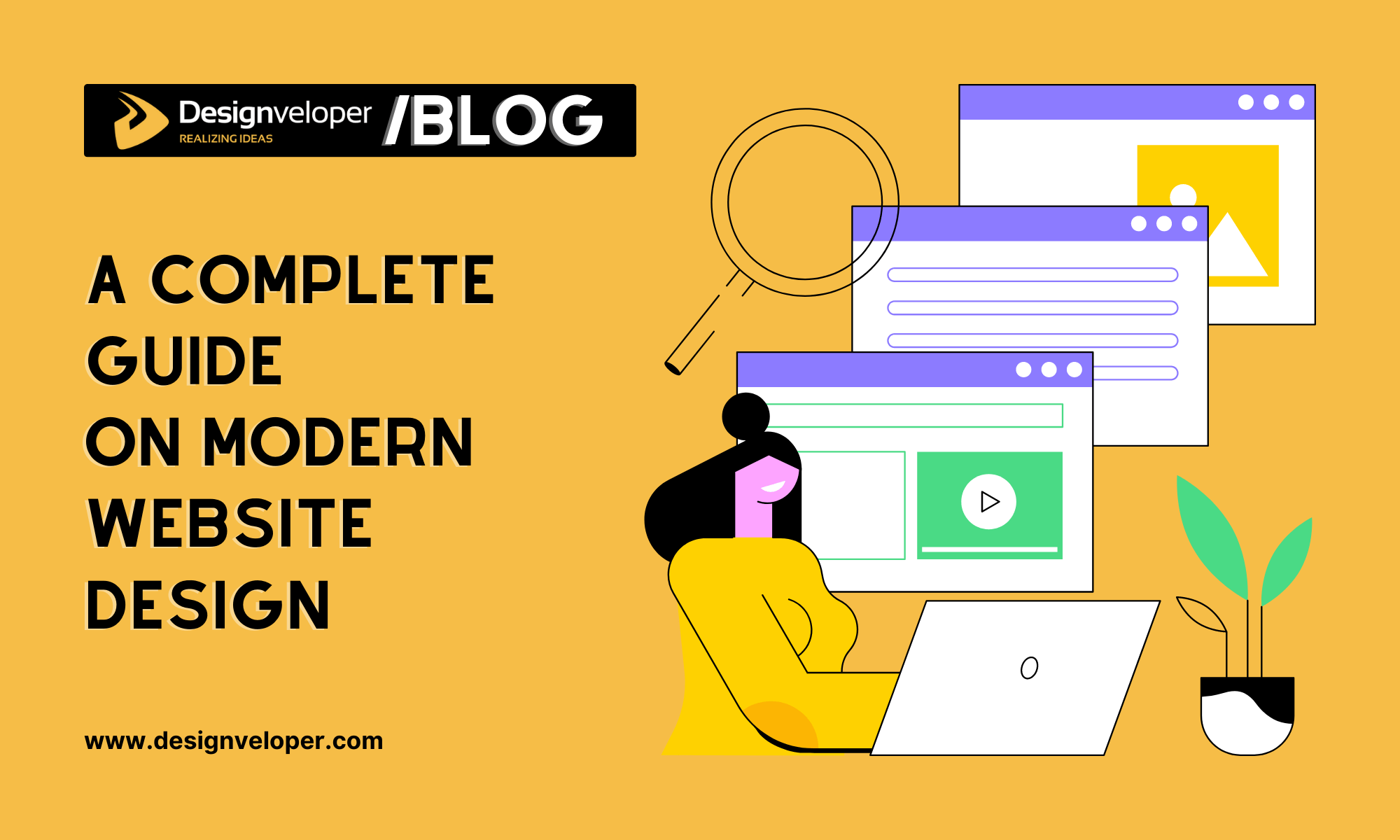The Importance of Mobile-Friendly Website Design
The Importance of Mobile-Friendly Website Design
Blog Article
The Ultimate Guide to Modern Site Style Trends
In the ever-evolving electronic landscape, modern web site layout fads play a critical role in shaping user experience and interaction. From the increase of minimal design principles that focus on simpleness to the influence of vibrant typography in specifying brand name identification, each component contributes to a cohesive on the internet visibility. The focus on receptive and mobile-first techniques, alongside ingenious microinteractions, additionally improves usability. In addition, the expanding concentrate on lasting website design methods mirrors a commitment to ecological obligation. These patterns jointly increase important questions regarding the future of effective website design and what it implies for consumers and organizations alike.
Minimalist Layout Concepts
Minimal design principles highlight the concept that less is more, supporting for simpleness and functionality in visual communication. This method strips away unneeded components, focusing rather on vital parts that convey the designated message successfully. By prioritizing quality, minimal design improves user experience, enabling site visitors to browse internet sites effortlessly.
Core tenets of minimal design consist of the usage of sufficient white room, which produces a sense of equilibrium and company. This unfavorable area not just guides the audience's focus to key elements however additionally fosters a relaxing visual ambience. Furthermore, a minimal shade combination is often utilized, using soft hues or single plans to preserve visual cohesion and avoid overwhelming the user.
Typography plays a crucial duty in minimalist layout, where clear font styles are selected for their simplicity and effectiveness in connecting content. Images and graphics are conserved, ensuring that they serve a purpose instead than sidetrack from the overall message. Eventually, minimalist style principles cultivate a concentrated atmosphere that urges customers to engage with the material, improving the total performance of modern website design. This pattern mirrors an expanding gratitude for thoughtful, user-centric appearances in electronic spaces.
Vibrant Typography Options
Welcoming vibrant typography selections has actually become a defining feature of contemporary website layout, as it efficiently captures interest and conveys solid messaging. Developers are increasingly making use of typography not just as a practical element yet as a vital visual element that improves the general aesthetic and user experience.

In addition, the juxtaposition of strong typography with minimal layout concepts permits striking contrasts, improving readability while keeping visual charm. Making use of whitespace around strong text additionally highlights its importance, guaranteeing that the message resonates with the audience.
As electronic landscapes come to be much more competitive, leveraging vibrant typography enables brand names to distinguish themselves and leave a long lasting impact. The careful selection of typefaces and their application can evoke emotions, establish tone, and drive action, making bold typography a crucial device in contemporary web site style. Ultimately, it is a powerful way to boost storytelling and make sure that essential messages are not just seen however additionally really felt.
Mobile-first and responsive Layout
Mobile-first and receptive design has actually become a vital concept in modern-day web site advancement, showing the increasing dependence on mobile gadgets for accessing on the internet web content. As individual actions shifts in the direction of mobile browsing, developers should focus on developing experiences that adjust perfectly throughout different screen sizes and resolutions.
A responsive design makes certain that an internet site immediately changes its design, photos, and functionality based on the gadget being made use of. Mobile-first layout advocates for developing internet sites initially for smaller sized displays, ultimately scaling up to larger display screens.
Applying receptive and mobile-first principles not only provides to individual preferences but likewise aligns with search engine optimization (SEO) techniques. Major search engines, like Google, focus on mobile-friendly websites in their positions, making it necessary for businesses to adopt these style methods. In a competitive electronic landscape, accepting receptive and mobile-first layout is not simply a choice; it is crucial for making sure accessibility and engagement with a diverse audience.
Engaging Microinteractions
Microinteractions play a pivotal duty in improving individual involvement and total web site experience, specifically in the context of mobile-first and receptive design. These refined layout elements give prompt comments to individuals, making interactions a lot more enjoyable and instinctive. Examples consist of button animations, notification informs, and packing signs, which not only guide users but also develop a sense of link with the interface.
Incorporating engaging microinteractions can considerably improve use by decreasing cognitive tons. When individuals receive acoustic or aesthetic comments upon executing actions, such as clicking a switch or submitting a type, they feel much more confident in their options. This fosters a smoother navigating experience, eventually boosting user retention.

As web site design patterns remain to progress, the value of microinteractions can not be overemphasized. They offer as the refined yet powerful touchpoints that change common communications into phenomenal experiences, thereby elevating the general effectiveness of modern-day website design.
Sustainable Website Design Practices
Lasting internet design methods are coming to be increasingly important as the electronic landscape expands and ecological concerns increase. Developers and programmers are recognizing their obligation to develop sites that not only offer individual demands however also minimize ecological influence. This approach incorporates numerous crucial methods.
To start with, optimizing power intake is vital. Internet sites should go to this site be made to pack swiftly and efficiently, which lowers server energy use and enhances user experience. Techniques such as picture compression, lessening HTTP requests, and utilizing modern-day coding practices add substantially to this objective.
Secondly, selecting eco-friendly hosting providers is crucial - website design. Lots of holding firms are currently powered by renewable energy resources, allowing web sites to operate in a more lasting fashion. This choice reflects a commitment to lowering carbon impacts
Additionally, adopting a minimal style can improve sustainability. Less aspects on a web page bring about much less data transfer, which not only speeds up loading times yet additionally saves resources.
Finally, advertising electronic availability guarantees that sites get to a bigger target market without unneeded bloat, straightening individual experience with environmental responsibility. By integrating these sustainable methods, internet designers can add favorably to both customer engagement and the world's wellness.
Final Thought
In summary, contemporary site design patterns stress the assimilation of minimal principles, strong typography, and receptive layout to improve customer experience. Embracing these patterns is important for producing impactful electronic experiences that resonate with users in an increasingly competitive online landscape.
In the ever-evolving digital landscape, modern-day website style patterns play a vital duty in shaping user experience and engagement. By prioritizing go quality, minimal layout enhances customer experience, enabling site visitors to navigate web sites easily.
Inevitably, minimal design concepts cultivate a concentrated setting that urges users to engage with the web content, enhancing the total efficiency of modern-day web site style.Microinteractions play an essential duty in boosting user engagement and total web site experience, especially in the context of receptive and mobile-first style.In recap, modern web site layout fads stress the integration of minimalist concepts, bold typography, and receptive layout to enhance individual experience.
Report this page